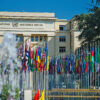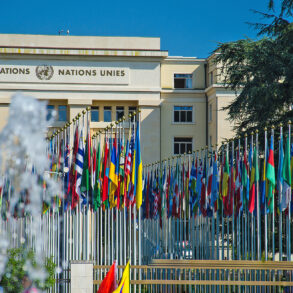Abaya: France’s government creates a prohibition against the wearing of a long overdress. It seems half-baked.
Paris (KNA). The decision had been expected. France’s new Education Minister Gabriel Attal wants to ban the wearing of the abaya, the long Muslim overdress, in the country’s schools. The ban is to come into force as early as the new school year (4 September), Attal announced on Sunday on the television channel TF1.
France continues its anti-religious course with abaya ban
There will then be clear, nationwide rules. In future, it should no longer be possible to tell which religion a pupil belongs to when he or she enters the classroom. The headmasters’ union welcomed the announcement.
Not even four weeks in office, the minister soon announced that he would act against the wearing of the abaja. This is a religious statement. In his announcement, Attal referred to French laicism, the separation of state and religious confession, which has been in force since 1905 and has been discussed time and again.
And the minister provided his interpretation at the same time: Laicism is “the freedom to form one’s own opinion and to emancipate oneself through school.”

Photo: Enrique Prazian | Licence: CC BY-SA 4.0
Conspicuous religious symbols have been banned in French schools since 2004. In addition to the Islamic headscarf, this also applies to Christian crosses and Jewish kippahs. In 2010, full-face veils were banned in public; however, the legally stipulated fines are rarely imposed.
In Berlin, female teachers are allowed to teach with a veil from the new school year onwards.
In Berlin, by the way, the trend is the opposite: Since the beginning of the school year this Monday, female teachers have been allowed to teach with a Muslim headscarf. This was made possible by relevant court decisions.
Whether the wearing of the abaja is clearly a religious statement has not yet been discussed in France. The floor-length and airy thin cloak or coverlet, which also covers the head and hair, is one of the traditional items of clothing for women in Muslim countries.
In France and also in Germany, it is becoming increasingly popular. According to estimates, up to 6 million of France’s 67 million inhabitants are Muslims. More conservative estimates put the figure at least 3.5 million.
CFCM association disagrees
The Islam umbrella organisation CFCM does not consider the garment to be a religious statement. Expected according to France’s party spectrum: conservatives and right-wingers favour a ban in schools; left-wing politicians are against it, speaking of a “dress police.” School headmasters had recently declared that they felt left alone with the problem.
The contours of the ban or its consequences are still difficult to discern. According to ministry figures, reports of violations of the secularist principle have increased by 120 per cent within a year, with half of the cases involving the wearing of religious clothing or symbols that contradict the 2004 law. “Our school has been put to the test,” the minister told headmasters a few days ago – promising them firmness in dealing with such violations.

Photo: CFCMF
Attal’s short-term predecessor, Pap Ndiaye (2022/23), had lacked exactly that. He retreated to case-by-case decisions by the headmasters. Ndiaye did not consider traditional garments such as the abaja or the Jewish kippa – unlike the Muslim headscarf – to be religious garments. Thus, they were not directly covered by the 2004 law.
The minister at the time recommended sanctions only regarding the student’s behaviour. Disciplinary action could be taken if the garment is worn regularly and the student refuses to take it off. It would have to be an outfit that he or she also wears on religious holidays.
New dispute expected
The ban on abajas will almost inevitably lead to a new dispute, as the major Islamic associations and umbrella organisations in France have already agreed that abajas are not religious garments. However, the government and the ministry could also argue further, for example by referring to the weight of Islamic influencers or to orchestrated campaigns against secularism on the Internet.
The ingenuity of young students should also not be underestimated if a catalogue of forbidden items of clothing is presented. There should be few limits to variations in colours, length, etc. to make the same political-religious statement. A narrower text of the law could thus quickly be reduced to absurdity.
Should the government of President Emmanuel Macron cut its teeth on the dress code in the education sector, one variant would remain in the end: a return to the school uniform, as it still works in many countries today.

Photo: GUE/NGL, via Wikimedia Commons | Lizenz: CC BY-SA 2.0
Left-wing populists reject ban
Paris (KNA) The left-wing populist movement La France insoumise (Unbending France, LFI) wants to challenge the announced law on the ban in schools before the supreme administrative court (Council of State).
According to French media, LFI leader Manuel Bompard described the decision by Education Minister Gabriel Attal on Tuesday as “dangerous and cruel.” Moreover, he said, it violates the constitution.
Such a ban would only increase discrimination against young women and especially young Muslim women, Bompard said; the country could not do with that.
The left-wing politician explained that the religious authorities of Muslims in France do not consider abajas to be religious garments; therefore, there are no reasons for a ban. He said that he expected the Minister of Education to do something other than “stirring up fears and fantasies.”











